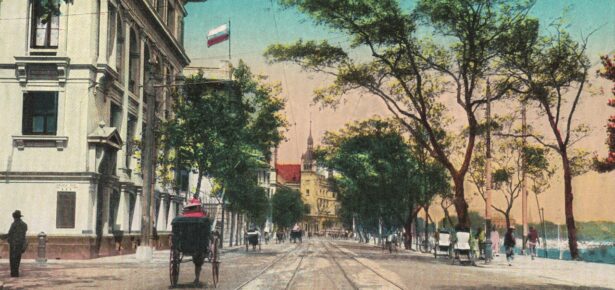
If one visits Shanghai’s iconic waterfront known as the Bund (or Waitan in Chinese) today, one immediately notices the many historical buildings that line the western side of the Huangpu River. Remnants of Shanghai’s former foreign-controlled International Settlement, between the mid-19th and mid-20th centuries many of these buildings were erected and occupied by the leading foreign banks operating in China at the time. During this period, foreign banks not only operated in Shanghai, but also in many other economic hubs along the Chinese coast, including Beijing and Tianjin in the North and Guangzhou and Hong Kong in the South. Some of these banks, such as the Hong Kong and Shanghai Banking Corporation, are still active and well-known today, even though they no longer occupy the same buildings along the Shanghai Bund. Others, such as the once powerful Yokohama Specie Bank, have long since ceased to exist and are now largely forgotten.
In my new book, Foreign Banks and Global Finance in Modern China, I tell the story of these foreign banks and their activities in China in the decades before the outbreak of World War I. The book shows that at a time when China’s economic relations with the global economy were growing rapidly, foreign banks were key in connecting China financially with the world. The case study my book focuses on is the German Deutsch-Asiatische Bank (DAB). Established in 1889, the DAB subsequently became one of China’s leading foreign banks and an important player in the growing economic relations between China and Germany.
Reflecting the international nature of the activities of these foreign banks, research for this book led me to many libraries and archives in East Asia and Europe (something I particularly miss at a time when global travel is only slowly recovering from the effects of the pandemic). What was particularly important to me when working on Foreign Banks and Global Finance in Modern China was to pay enough attention to the banks’ Chinese interlocutors and Sino-foreign interaction in the financial sphere. This meant that, in addition to primary sources in other languages, I used a large corpus of Chinese primary sources to write this book, ranging from archival sources to personal papers and newspapers, which allowed me to gain a better understanding of the relationship between foreign financial institutions and Chinese actors.
Besides the immediate activities of foreign banks in modern China, my book also demonstrates that China was very much part of financial globalisation before World War I. In turn, China’s global financial connections could exert an influence on the outcome of major events taking place in modern China.
Latest Comments
Have your say!